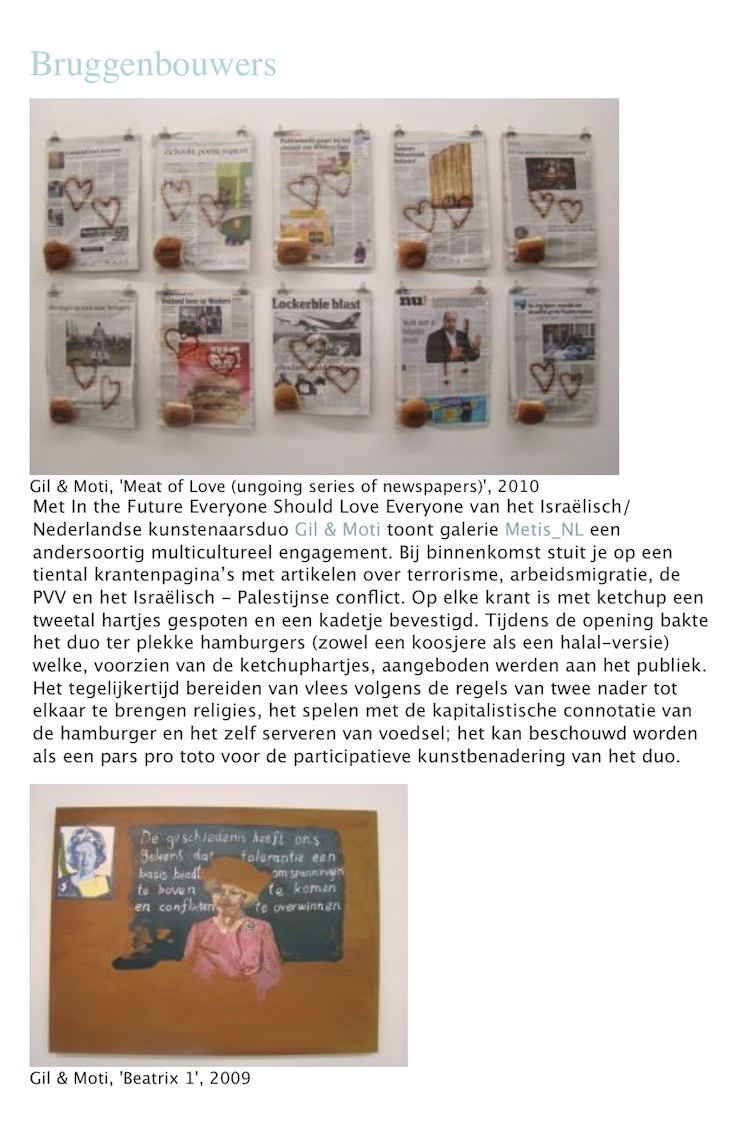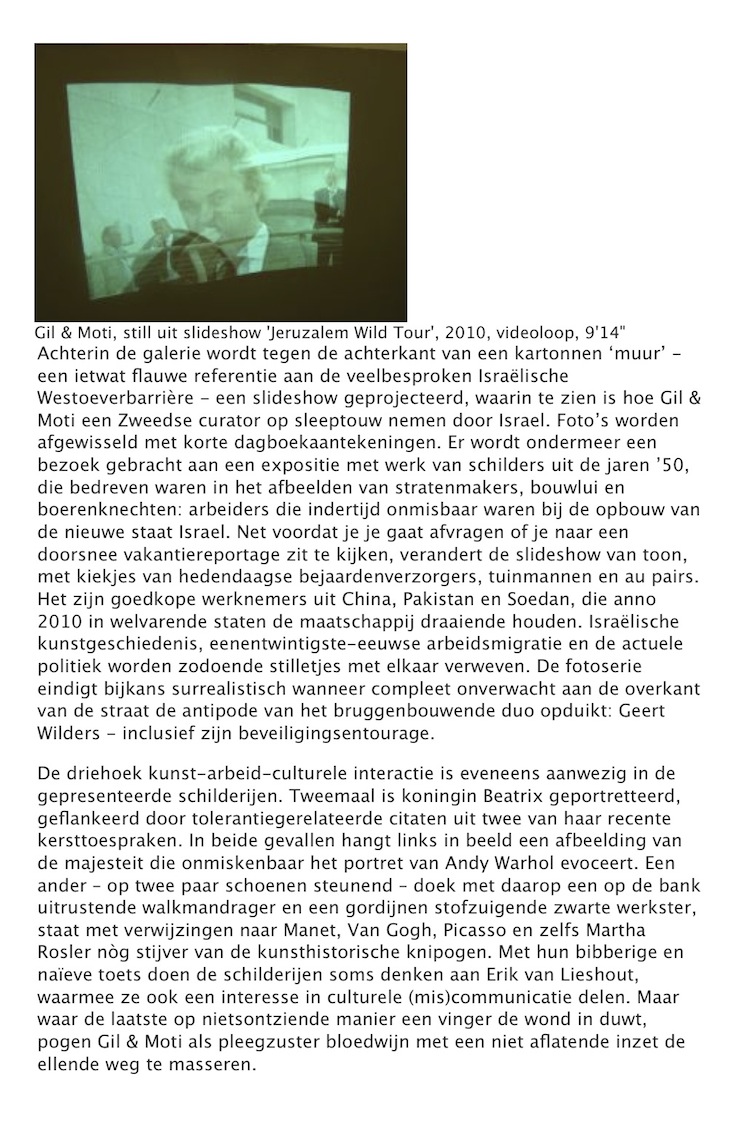Metropolis M, The Netherlands, Wednesday15 December 2010
Bridge Builders
Jaring Dürst Britt
English translation: Heleen Schröder
With the Israeli/Dutch artist duo Gil & Moti’s In the Future Everyone Should Love Everyone, Metis NL gallery
is showing a different kind of multicultural engagement. On entrance,
one is confronted with a dozen newspaper pages with articles about
terrorism, labour migration, the PVV [Dutch Party for Freedom] and the
Israeli-Palestinian conflict. On each page, two hearts have been drawn
in ketchup and a bread roll has been attached. During the opening, the
duo fried hamburgers on the spot (both a Kosher and an Halal version)
which they served, with ketchup hearts, to the audience. The
simultaneous preparation of meat according to the dietary rules of two
religions which might be brought into dialogue, playing with the
capitalist connotation of the hamburger, and serving the food
themselves; it could be seen as a pars pro toto for the duo's
participatory approach to art.
At the back of the gallery, a
slide show is projected onto a cardboard ‘wall’ – a somewhat lame
reference to the controversial West Bank barrier – showing Gil &
Moti taking a Swedish curator around Israel. Photo's alternate with
short diary entries. Among other things, they visit an exhibition of
painters form the 1950’s, adept at depicting pavers, bricklayers and
farm hands: laborers who were indispensable at the time for building
the new state Israel. Just before you ask yourself whether you are
looking at an average holiday report, the slide show changes tone, with
snapshots of contemporary elder care workers, gardeners and au pairs.
They the are cheap laborers form China, Pakistan and Sudan, who keep
society going in wealthy states in 2010. In this way, Israeli art
history, twenty-first century labour migration and contemporary
politics are quietly interwoven. The photo series ends on an almost
surreal note when, completely unexpectedly, the polar opposite of the
bridge building duo appears across the street: Geert Wilders, including
his security entourage.
The triangle of art-labour-cultural interaction is also present in the
exhibited paintings. Queen Beatrix is portrayed twice, flanked by
quotations related to tolerance from her recent Christmas addresses. In
both cases, a depiction unmistakably evoking Andy Warhol’s portrait
occupies the left side of the image. Another canvas, resting on two
pairs of shoes, depicting a walkman wearer resting on a sofa and a
black cleaner vacuum cleaning the curtains, is even more overloaded
with art historical references: Manet, Van Gogh, Picasso and even
Martha Rosler. With their shaky and naive touch the painting are
sometimes reminiscent of Erik van Lieshout, with whom they also share
an interest in cultural (mis)communication. But while Van Lieshout
ruthlessly puts his finger on the sore spot, Gil & Moti attempt,
with unwavering commitment, to massage away the misery.
Gil & Moti, In the Future Everyone Should Love Everyone
Until 24 December 2010

